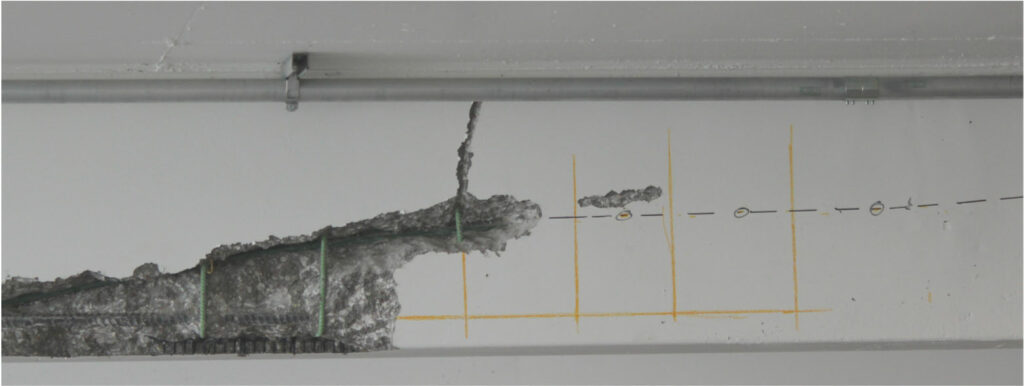RainierGPR Service Areas: Comprehensive Insurance Coverage for Concrete Scanning
RainierGPR Service Areas: Comprehensive Insurance Coverage for Concrete Scanning
Blog Article
Concrete Scanning: An Essential Action In The Direction Of Ensuring Structural Stability and Security
In the world of building and infrastructure upkeep, the importance of concrete scanning can not be overstated. By utilizing advanced modern technology and approaches, concrete scanning serves as a pivotal tool in making sure that the stability and safety of buildings and bridges are upheld to the highest possible standards.
Significance of Concrete Scanning
Concrete scanning plays a vital function in ensuring the architectural honesty and security of buildings and infrastructure tasks. By using advanced modern technologies such as ground-penetrating radar (GPR) and electro-magnetic induction, professionals can non-destructively inspect concrete frameworks to discover potential issues, spaces, embedded things, and reinforcement format. This procedure enables very early detection of anomalies that can compromise the stability of a structure, protecting against expensive damages and ensuring the safety and security of residents.
Before exploration, reducing, or coring into concrete, scanning helps determine the specific locations of rebar, post-tension cords, and various other ingrained elements, decreasing the danger of unintended hits that can lead to structural weaknesses. Furthermore, concrete scanning help in top quality control by confirming the thickness of concrete covers and detecting any type of disparities that might affect the overall toughness of the framework.
Technology for Concrete Assessment

Advantages of Very Early Discovery
Prompt detection of structural issues can considerably alleviate dangers and make certain the long life of building jobs. By determining prospective issues beforehand in the building and construction procedure, stakeholders can take proactive measures to address issues before they escalate into larger and more costly problems. Among the vital advantages of very early discovery is the avoidance of architectural failures, which can position major security risks and result in project delays and economic losses.
In addition, very early discovery enables for timely repair work and maintenance, which can aid prolong the life-span of the framework. By dealing with issues promptly, building and construction groups can prevent costly repairs or also the demand for premature replacement of structural components. This positive method not just saves money and time but also boosts the general safety and resilience of the construction task.
Furthermore, early discovery can improve task planning and decision-making by providing stakeholders with beneficial insights into the condition of the structure. Equipped with this info, task supervisors can make informed selections concerning construction techniques, timelines, and materials, resulting in more effective and efficient task end results.
Guaranteeing Architectural Stability
Making certain the structural security of a building project is vital to its safety and durability. Architectural stability refers to the capability of a structure or facilities to keep its form and feature under ecological problems and different tons. To accomplish this, detailed evaluation and surveillance of the framework are essential. Concrete scanning plays an important role in making sure architectural stability by finding potential issues such as spaces, delamination, or support deterioration that could jeopardize the stability of the framework over time.
By making use of innovative scanning technologies like ground-penetrating radar (GPR) and electromagnetic induction, construction specialists can non-invasively inspect concrete structures to identify areas of concern beneath the surface. This proactive approach allows for the very early discovery of weak points or issues, enabling punctual repair services or reinforcement to avoid structural failures.
Normal concrete scanning throughout various building stages and throughout the life cycle of a structure can help keep its security, minimize threats, and make sure the security of residents. By prioritizing architectural security via concrete scanning, building projects can enhance their strength and toughness, inevitably contributing to greater safety and security and long life.

Avoiding Crucial Failures
To protect versus disastrous events, precise surveillance and proactive maintenance are imperative in avoiding vital failures within architectural frameworks. Detecting possible problems prior to news they intensify is crucial to avoid architectural failures. Applying routine assessments, such as concrete scanning, can disclose surprise defects like gaps, fractures, or deterioration that can compromise the stability of a structure. By making use of innovative scanning innovations like Ground Passing through Radar (GPR) or Concrete X-ray, engineers can non-destructively analyze the condition of concrete and identify weak points that require support or repair - RainierGPR Service Areas.

Conclusion
Finally, concrete scanning plays a crucial role in making certain structural integrity and safety and security by using innovative innovation for early discovery of potential problems. This proactive technique helps stop essential failings and guarantees the security of structures. It is essential to focus on concrete examination as a typical technique to secure the long life and security of structures and infrastructure.
Concrete scanning plays a vital function in making certain the top article structural stability and safety and security of buildings and facilities projects. Additionally, concrete scanning help in top quality control by verifying the density of concrete covers and identifying any kind of disparities that might affect the general longevity of the structure. Concrete scanning plays an essential role in ensuring structural security by identifying prospective issues such as gaps, delamination, or reinforcement rust that can compromise the integrity of the framework over time.

In conclusion, concrete scanning plays a vital function in making certain architectural stability and security by making use of sophisticated technology for early detection of possible issues.
Report this page